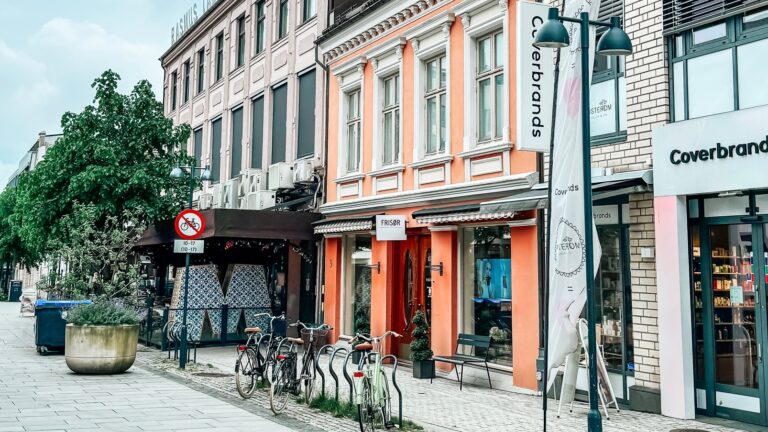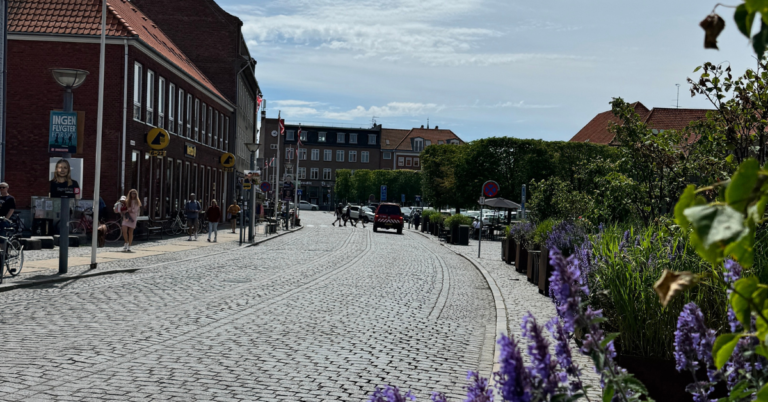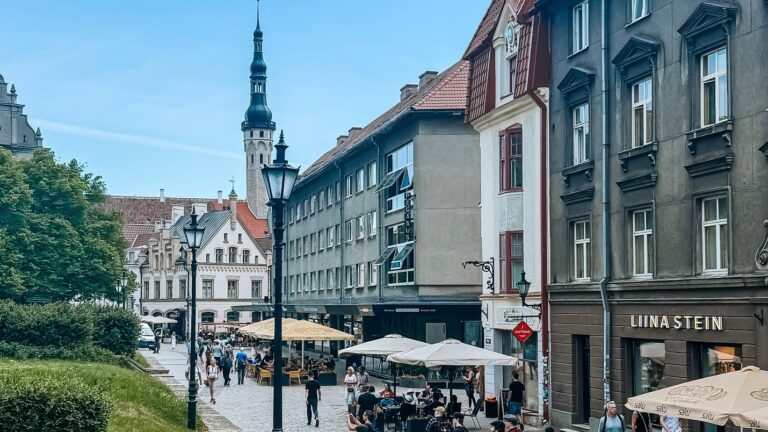Vibrant Visby: From Sweden’s Cruise Port to Remarkable Historic Sites
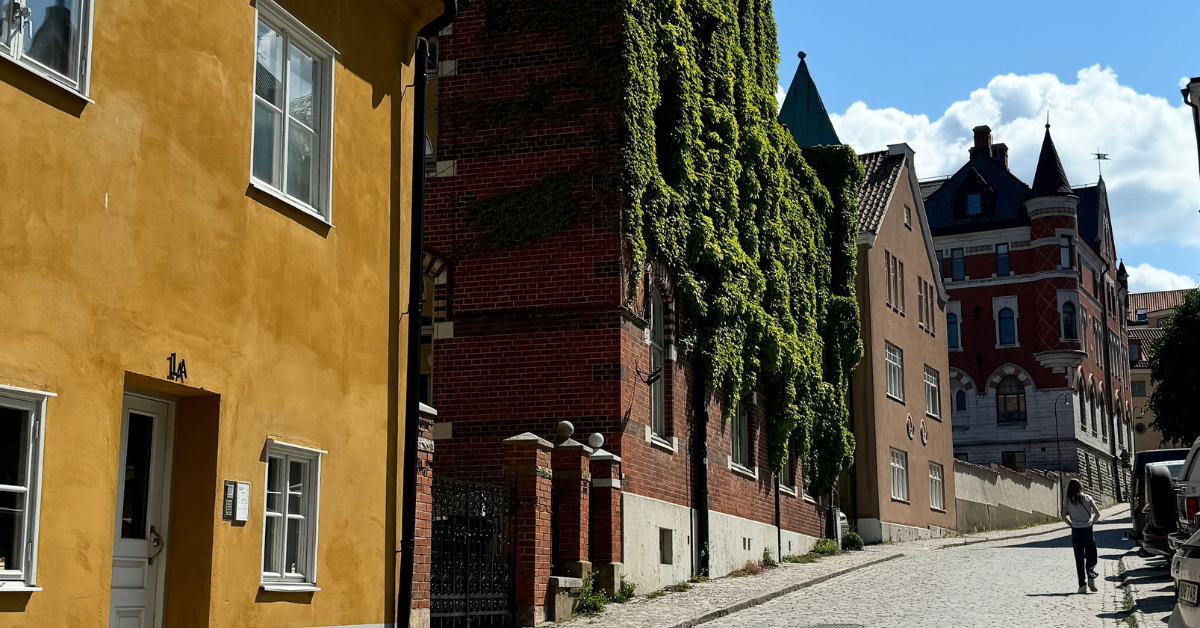
Visby, the main town on the island of Gotland in Sweden, is a significant stop on many Baltic cruise itineraries. American cruise lines such as Celebrity, Norwegian, and Royal Caribbean often dock here. I visited on a sailing on Holland America Line’s Zuiderdam, which also called upon another Swedish cruise port, Stockholm, which couldn’t be more different.
Related: Check out my video review of Zuiderdam.
Visby features a modern cruise terminal located at the Visby Ferry Terminal, which provides convenient access to the town and its sites. This port stands out for its well-preserved medieval architecture and UNESCO World Heritage status, making it a unique and historical destination. It also belies the “small village” feel of Visby, which has a population of just 24,000. Known for its medieval walls and historic buildings, Visby offers visitors a step back in time.
Visby Cruise Port to the City Center
The cruise port is located about a mile-and-a-half from Visby’s city center, which is the town, making it easily accessible on foot. A leisurely walk will take you about 20 minutes. During my visit, the town of Visby provided free shuttle service to cruise visitors, running every 30 minutes, which was a convenient option.
Once in the town, most of Visby’s most notable sites are all located near one another. I really loved this port, not just for its history and beauty, but also for the fact that this is one of those ports where cruisers don’t need to spend much (or even any) money to enjoy all that the location has to offer.
For those preferring quicker transport, taxis are available, with fares typically ranging from 10 to15 USD. Public transportation is also an option, with buses running frequently between the port and city center for about $3 USD per ride. Like other smaller cruise ports on a Baltic itinerary such as Aarhus, ride-sharing services like Uber are not an option.
Things to do in Visby
European cruise excursions tend to be quite expensive and somewhat limited, so if you’re looking for things to do in Visby, here are some of the top choices. You’ll likely find them offered as official cruise line excursions, or you can venture out and explore them on your own. Just make sure you’re aware first of the pros and cons (and risks) of independent excursions. Because of this being a smaller port city, and the locations all located near one another, this is a great opportunity to eschew an excursion and explore independently.

Visby City Wall
The Visby City Wall is a medieval defensive wall surrounding the old town of Visby. Dating back to the 13th century, is one of the best-preserved medieval city walls in Europe. Like many of Visby’s historic sites and ruins, there is no entrance fee to explore the exterior of the wall.
Walking along the wall offers stunning views of the town and the surrounding landscape. Several towers and gates are accessible, providing a glimpse into the medieval defense mechanisms. The wall also serves as a picturesque backdrop for the perfect photo opp.
Church Ruins
Okay, confession time. Visby was one of the last ports of call on my Baltic itinerary, and by this point, I was a little burned out of historic churches. Visby, however, offered sites that took my breath away, which were Medieval church ruins. In fact, Visby is renowned for its well-preserved medieval church ruins, each with its own unique history and architectural significance, and free to explore.
There are many church ruins in Visby, but two that we visited were St. Lars Ruin and St. Karin’s Ruin. St. Karin’s Ruin, located in the heart of Visby, dates back to the 13th century and was originally a Franciscan monastery church. The St. Lars Ruin is distinctive for its round church design, a relatively rare feature in medieval architecture. This unique architectural style offers a fascinating perspective on the varied designs of Visby’s historical churches.
Both ruins are essential stops for anyone exploring the rich medieval history and architectural heritage of Visby. When it comes to ruins, there are many of them, so don’t necessarily worry about plotting or planning these visits out in advance. Simply explore the town, and you’ll run into them!
Gotland Museum
The Gotland Museum, located in the heart of Visby, offers insights into the island’s rich history, from prehistoric times to the medieval period. The museum features a vast collection of artifacts, including Viking treasures, medieval weaponry, and historical exhibits.
Visitors can explore the unique culture and heritage of Gotland through interactive displays and detailed exhibits. It’s an educational experience that provides a deeper understanding of the island’s past. Admission costs around $10 USD per person.
St. Mary’s Cathedral
St. Mary’s Cathedral, also known as Visby Cathedral, is a significant historical and religious site. The cathedral dates back to the 12th century and is a beautiful example of medieval architecture. Like many of Visby’s other historic sites, there is no entrance fee to visit the cathedral.
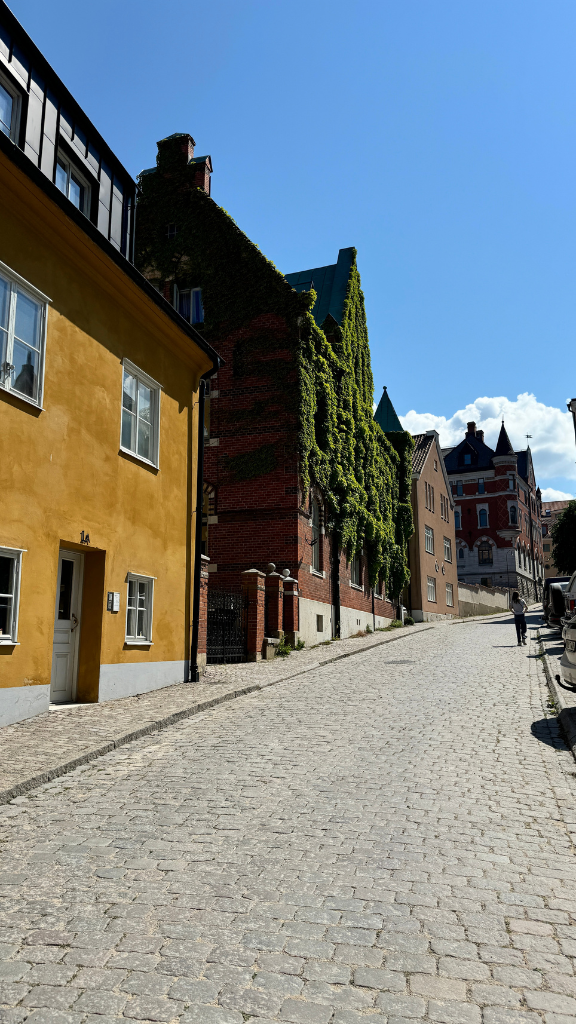
The interior of the cathedral is equally impressive, featuring stunning stained-glass windows and intricate woodwork. Visitors can attend services, explore the historic artifacts, and enjoy the peaceful ambiance of this sacred space.
Botanical Gardens (Botaniska Trädgården)
The Botanical Gardens in Visby are a serene oasis located in the heart of town, and if you’re cruising to Visby, this is a must visit stop. Conveniently, the city of Visby free shuttle dropped us off adjacent to the gradens, so it was a convenient location to visit.
The gardens are free to enter and offer a tranquil setting with a variety of plants and flowers. Visitors can stroll through the well-maintained paths, admire the diverse flora, and relax in peaceful surroundings. The gardens are especially known for their collection of roses, making it a delightful place for nature lovers and photographers.
Almedalen Park
Not far from the Botanical Gardens of Visby is Almedalen Park, the city’s central public park, known for its picturesque setting and historical significance that is free to visitors to explore. The park is great for a quick visit and scenic stroll to enjoy its lush greenery, small pond, and beautiful walking paths.

Language and Currency
The official language of Visby and the entire country of Sweden is Swedish, although many residents also speak English, especially in tourist areas. During our visit, all of the vendors we interacted with were fluent in English.
The official currency in Visby and throughout Sweden is the Swedish Krona (SEK), and most vendors do not accept US currency. Credit cards are widely accepted, and in most European locations, tap-to-pay or contactless payment is becoming very common and quite convenient.
A tap-to-pay credit card, also known as a contactless card, allows users to make payments quickly and securely by simply tapping the card against a contactless-enabled payment terminal, eliminating the need to swipe or insert the card and enter a PIN.
Visby Cruise Port Ship Schedule
The Visby, Sweden cruise ship schedule can be found at Cruisemapper.
Visby Time Zone
Keeping track of time zones can get complicated when cruising, especially for Americans on European cruises with substantial time zone differences, and itineraries may result in time changes during the cruise. Your captain will make announcements during the cruise to update you on these changes, but it’s good to be aware of these differences ahead of time when planning your stop at the port, especially for excursions.
Visby follows Central European Time (CET), which is UTC+1 during standard time, and Central European Summer Time (CEST), which is UTC+2 during daylight saving time. However, please note that time zones and daylight saving time rules may change, so it’s always a good idea to double-check the current local time when planning travel or activities.
Many cruise lines operate on “ship time” corresponding with the embarkation point, so if your cruise sails from Amsterdam or Ijmuiden, which follows Central European Time (CET) zone.


